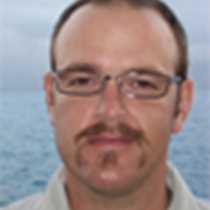Santa Cruz Island
This morning we could sense the anticipation for not only the giant tortoises of the Galápagos, but also for the human aspect of this archipelago. We landed at Puerto Ayora this morning and we proceeded to integrate ourselves into the local population. A chance for us to know the true lifestyle of the “Isleños”, or local “Galapagueños”, that bridge our visitors and the environment which is fundamental to our understanding of Galápagos as a whole.
At our fisherman’s dock the local sailors were bringing in the catch of the day, which included Wahoo, Yellow Fin Tuna, and Rock Fish. A sea lion and a flock of young pelicans were waiting nearby trying to obtain their take of this catch from their cohabitants of the Galápagos. After this short taste of the local color we started to board our buses to the “highlands” to find the giant tortoises of Galápagos. Humans in the archipelago have lived with tortoises for centuries, at one time even utilizing these gentle giants as a food source. We found various large males that have arrived from the lowlands after breeding with the females. These males will rest here for the following months, eventually returning to the females during the hot and rainy season. We also encountered a lava tube with a Barn Owl at its entrance. Lava tubes litter this island and are a constant reminder of its volcanic past.
Our visit with the giant reptiles of Galápagos is punctuated with interaction with the local residents. As we head to lunch we visit a small working farm that has been in operation for many years. The owners have worked the land since the late 40’s and have made quite an impression as providers of molasses, sugar cane juice, roasted coffee, and cane liquor that is traditional in Ecuador. All were delighted to see the processes that make products are common in our local markets and stores. It is always a privilege to learn about the practices that support our lives in so many ways.
We arrived at an “oasis” in the highlands, a restaurant that served our midday meal. This establishment is somewhat different. Tim and Ana have made a highland escape complete with cabañas and a true encounter with the local people. Barn Owls perched upon a small wall taking a deep rest before the night, as we took a seat and had a wonderful meal.
As we returned to the coast we encountered tortoises in a different environment. The Charles Darwin Station houses the rearing and breeding program that is managed by the Galápagos National Park Service. Our visit gave us a direct link with the conservation efforts that are taking place in this “world among itself” as Darwin described it. The rustic scientific station presented us with a look into the very effective and simple conservation efforts related to the giant tortoise’s survival. Galápagos is unique in so many ways; especially that it maintains high level of its endemism. We are able to witness species as Darwin observed them.
As the sun sets and the mist settles once again upon the highlands we move at a casual stride through Puerto Ayora. Families start to walk at a slow pace on the main street and we see the interchange of the day’s novelties between family members. The Ecuavolly teams start to show up at the main dock to show their skills at an endemic game from Ecuador. A seasoned street vender sells roasted pork and Plantain rolls with tuna. “Uno mas porfavor” (one more please) a young child says as he dismounts his bicycle. The sun casts its glow among the thin clouds and Galápagos is bathed in a different light as we return to our home, National Geographic Endeavour.




